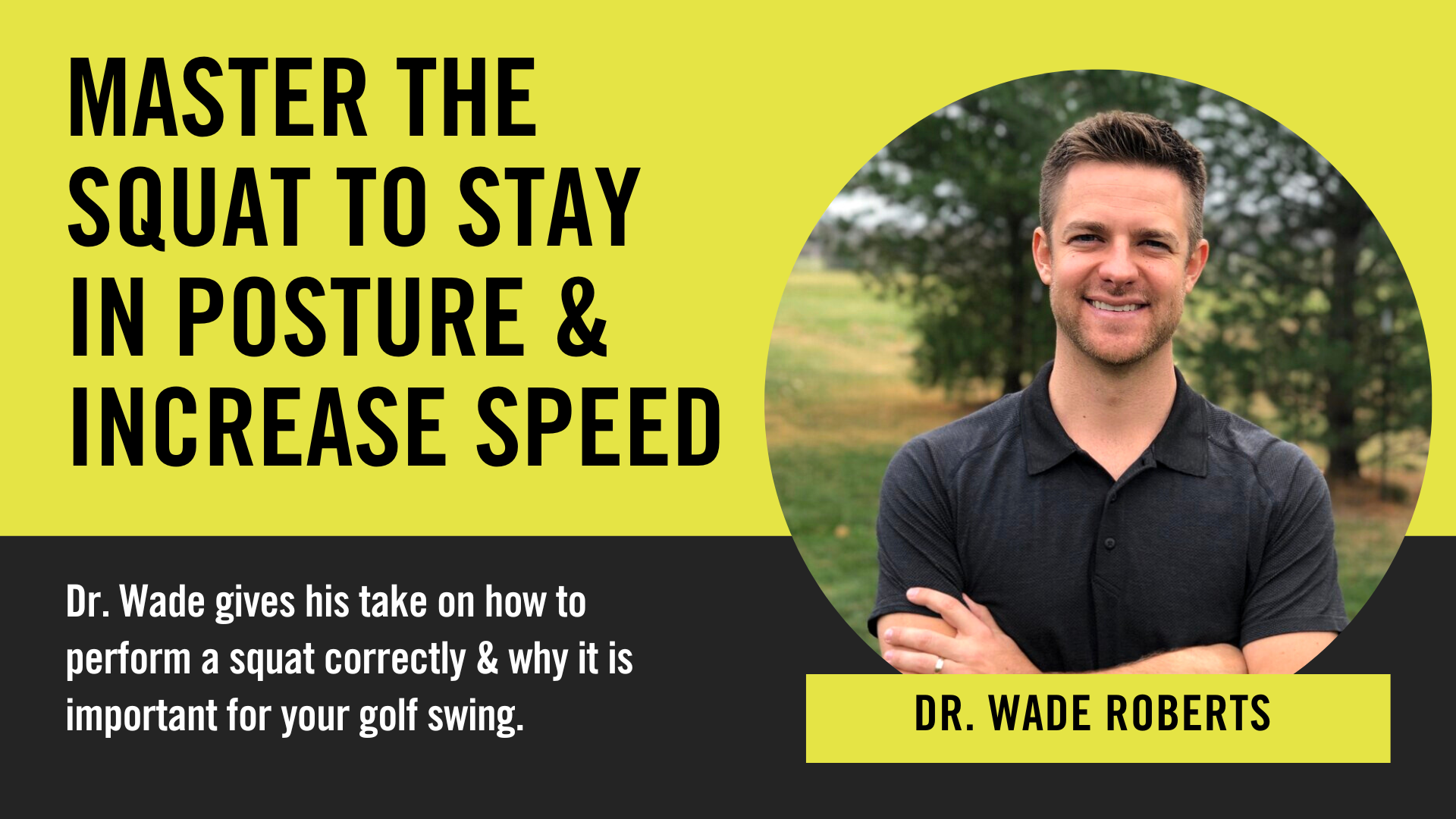The squat is one of golf’s most important, yet most incorrectly performed exercises.
Why is the squat so important for you the golfer to train?
If a golfer has difficulty performing a full lower body squat with heels on the ground, it will be almost impossible for them to maintain posture during their downswing.
This usually manifests itself as what we call ‘early extension’ which is thrusting your lower body towards the golf ball and raising your trunk up during the downswing.
A common question I get asked is, “well we’re not supposed to squat that far down during the golf swing so why does that matter?” While you would be right in saying that, what is in question is the golfers’ ‘pattern’.
Without getting into the weeds on motor patterns, the sensation of your center of mass moving down and back on your transition from the top of your swing and into your downswing is a foreign concept and feel in people who can’t complete a full deep squat pattern. Therefore, they will be more likely to ‘stand up’ on the downswing too early as previously stated.
If you tend to do this in your golf swing, mastering the squat is for you!
Your lower body power is your number one power source in for generating clubhead speed.
You want to hit it farther? You need lower body strength. You want to know how to get lower body strength? Start squatting…but be wise and do it correctly!
How to master the squat:
Let’s start with what an optimal or functional squat entails. As a Doctor of Physical Therapy, I can nerd out on the components of an optimal squat..but for this article’s purpose I’ll give you my top hitters I look for so that you can apply for yourself:
- Stand with feet shoulder-width apart (or wider) – with toes pointed slightly outward – arms extended out in front (if just starting with body weight)
- The low back should be in a ‘slightly’ arched or neutral position
- Allow the hips and knees to slowly flex while keeping the torso-to-floor angle relatively constant (meaning do not flex the torso forward or round the back)
- Keep the heels on the floor and the knees aligned over the feet
- Continue flexing the hips and knees until the tops of the thighs are parallel to the floor, the trunk begins to round or flex forward, or the heels rise off the floor
- Extend the hips and knees back to the starting position
There you go! To say I see a lot of poor squatting patterns in the gym would be an understatement…
Why is it so hard for most people to perform a safe, functional squat? Simply put, it’s a complex movement that requires so many areas of your body to perform. That’s why it’s such a good assessment for me the PT to use on my golfers!
There can be a host of reasons why someone is unable to perform a good squat, but I’ll give you my top five:
- Limited ankle dorsiflexion mobility
- Limited T-spine extension mobility
- Limited hip mobility
- Limited knee mobility
- Core stability
You can assess a couple of those items yourself at home right now by claiming your free home assessment here! https://www.robertspt.co/home-assessment-form
How is your squat?
Safety and longevity in the game is a premium for a golfer of any age. However, it’s most important for the aging population. Younger players can get away with poor squatting technique way better than aging golfers. As we age, we don’t heal as well or as fast as when we were younger. The last thing you want to do is attempt to do an exercise only to ruin a month of golf or worse miss out on a tournament or your buddies’ golf trip because your back is messed up from ‘working’ out.
If you don’t have a trusted Doctor of Physical Therapy specializing in golf supervising your squat to minimize early extension or increase your lower body strength/power to pick up some club head speed, we’d love to help.
We’ve done all the studying on how to safely perform and apply these things to your golf game so you don’t have to.
Let us help you and give us a call at 214-998-9904 or email wade@robertspt.co.
Dr. Wade Roberts is a contributing writer for Central Links Golf. Dr. Roberts is the owner of Roberts PT, a golf PT and Performance Center in Kansas City. He graduated from Liberty University with a Bachelor of Science Degree in Kinesiology. He then earned his Doctor of Physical Therapy from Lynchburg College. Dr. Roberts is able to provide specialized therapies for a variety of patients but has a special interest in decreasing pain, increasing speed, and achieving longevity in the game of golf.
